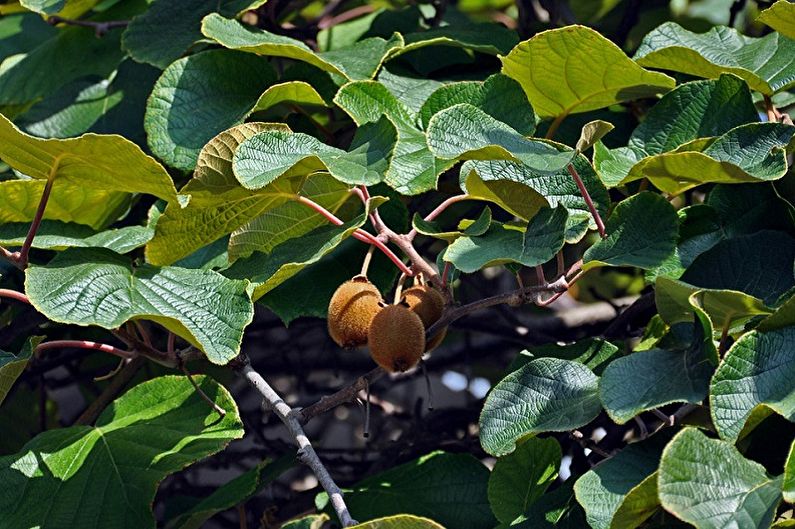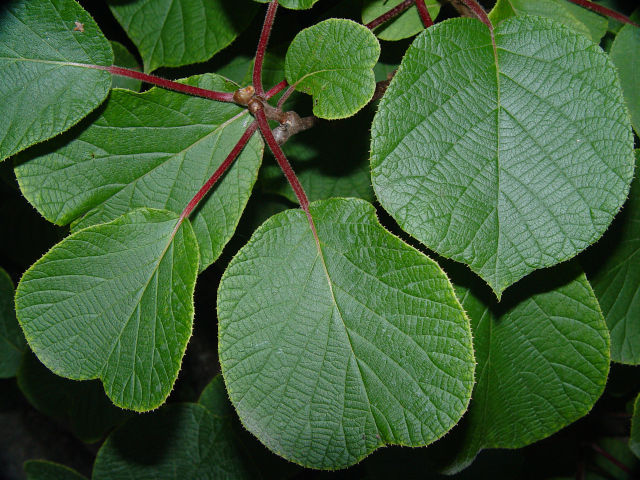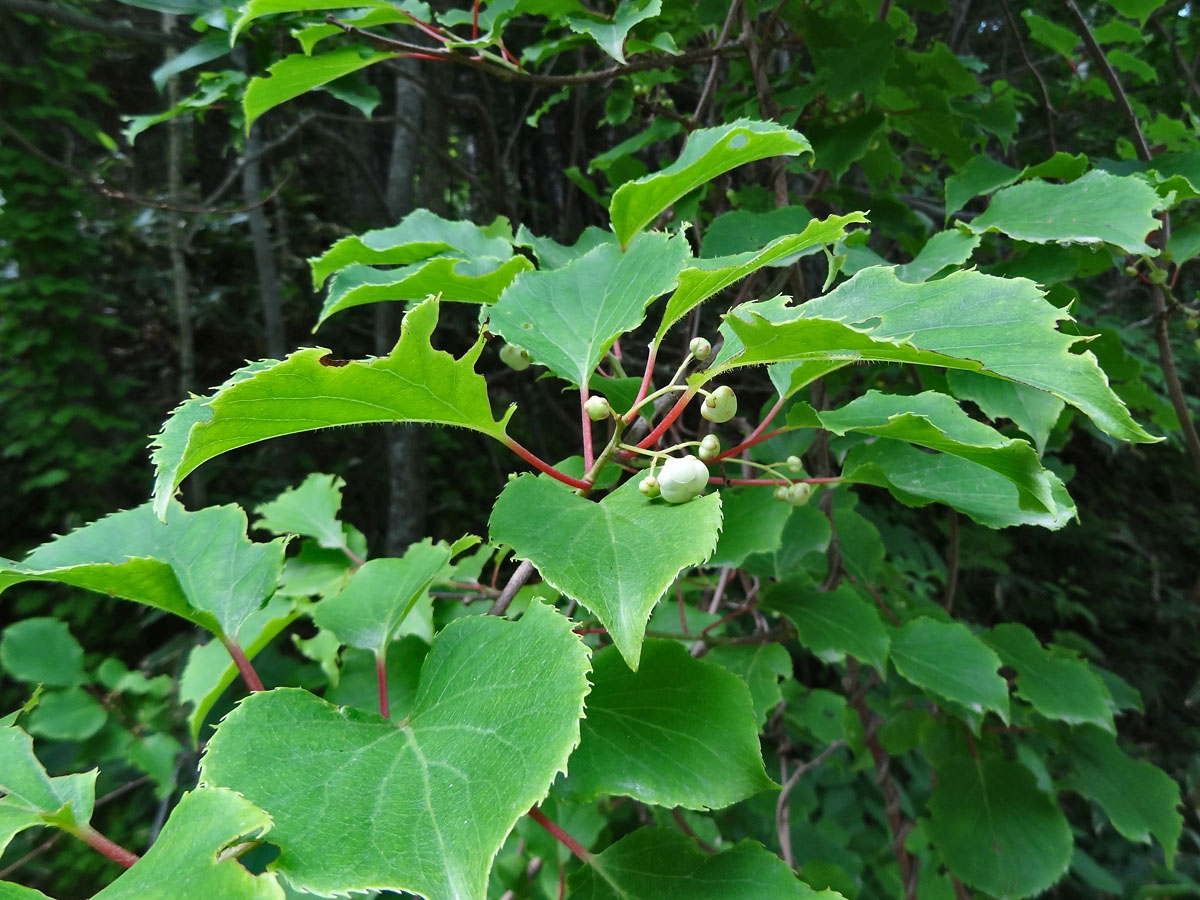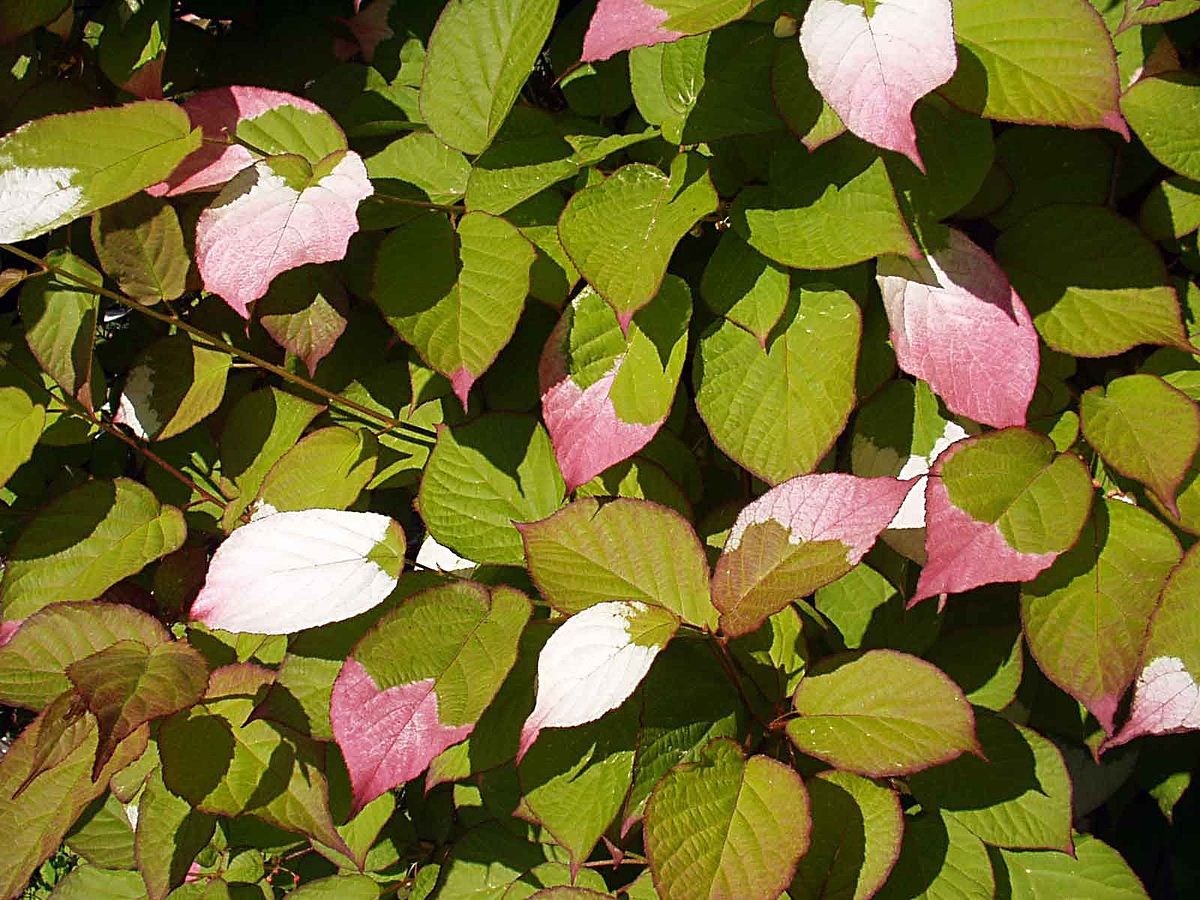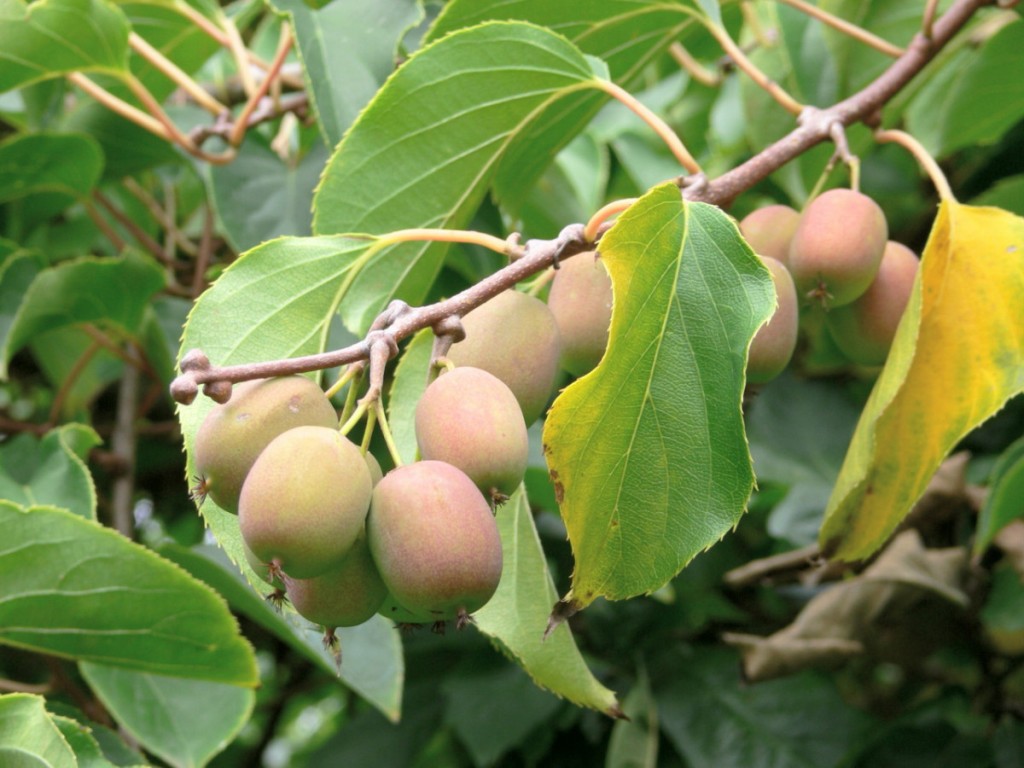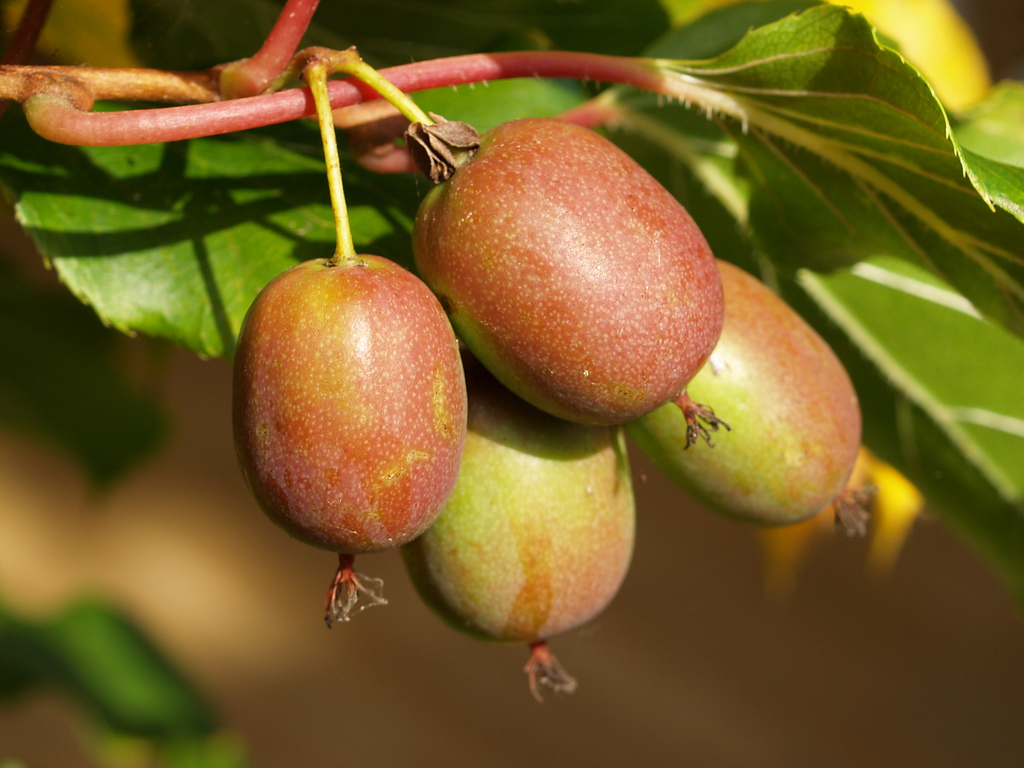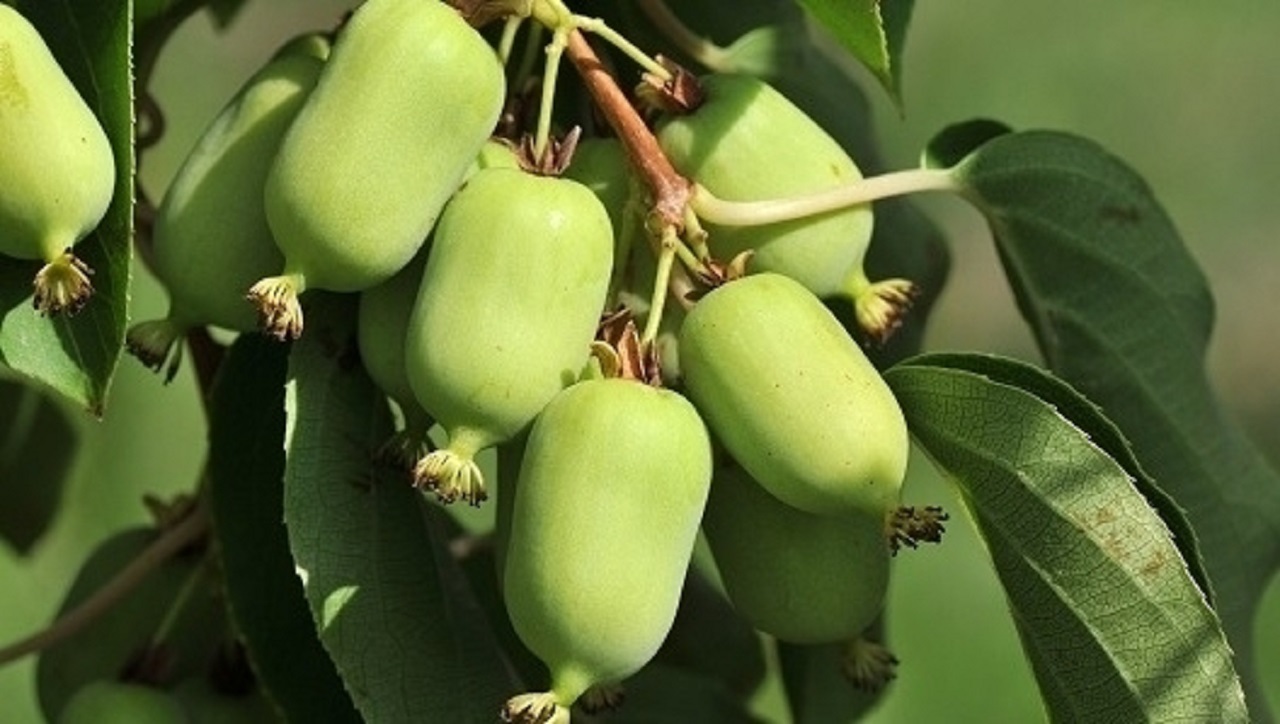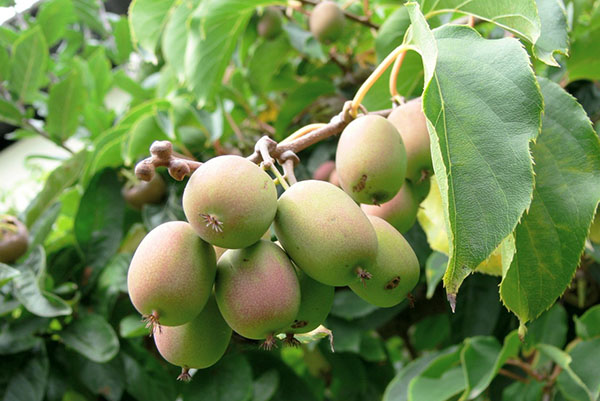Content:
Chinese actinidia is a beautiful ancient tree-like vine, whose homeland is China. At the beginning of the last century, a gardener from New Zealand, who received the seeds of actinidia in his hands, through selection that lasted several decades, received a fruit called kiwi. This name was formed due to the similarity with the eponymous wingless New Zealand bird.
The original actinidia fruit began to be called "Chinese gooseberry" for its size, much smaller than the usual kiwi, 2-4 cm. It is usually customary to call Chinese actinidia non-varietal plants obtained from seeds. In the wild, liana grows in tropical areas, in the Far East, Central Asia. And breeding varieties are grown in the USA, various European countries and Japan.
Features of culture
The peculiarity of the Chinese actinidia is, first of all, its flexible climbing liana, which reaches an average of 8 m in length, the bark of the shoots is woody, with a red-brown tint. The culture is deciduous, the leaves are large, wide, leathery, pubescent underneath with small hairs. The fruits are also slightly pubescent, the flesh is green, with multiple seeds. The fruits of long storage, taste sweet and sour, aromatic. One fruit contains the daily norm of vitamin C. The roots of the Chinese actinidia are superficial, considerably located in width.
Chinese actinidia is grown in the garden for fruit and decoration. In actinidia, all parts are decorative: a beautiful flowering, similar to an apple tree, rich foliage and fruits containing a large amount of vitamins. Liana needs a high-quality support, more than 2 m in height, for this purpose, you can make a hedge, wrap a gazebo, create screens for zoning the site. It blooms in late May and early June. The flowers are white at first, then become yellow-cream, smelling like a rose scent.
An important feature is the heterogeneity of the plant. There are female and male specimens that can only be distinguished during flowering. The reason for this is that a pistil is secreted on female flowers, and the pollen on the stamens is not viable, undeveloped, and on male flowers, on the contrary, there are many stamens with pollen. One male plant is capable of pollinating 10-12 female plants, therefore, for greater productivity, they are planted together. Only its own variety is cross-pollinated. Pollination is due to bees or wind. When grown in a greenhouse, manual pollination is required.
Actinidia can be grown indoors, in tubs, on balconies and greenhouses.
Growing conditions
At home, Chinese actinidia grows in forests, in conditions of high humidity and partial shade. That is why it is required to provide her with the same conditions on her personal plot. It will not grow fully on heavy soils, loamy or sandy loam soils are suitable. For the crop, it is necessary to create acidified, light drained, always moist soil, which must be kept free of weeds.
Chinese actinidia does not withstand severe frosts, it can withstand temperatures down to -10 ° C. Therefore, it is more expedient to grow it in the southern regions and in the Caucasus. The place is chosen illuminated, but not full daylight hours, from where partial shade will be created. With further growth, the vine itself chooses the most suitable area of illumination, but for the root system, the scorching sun can become destructive. It is preferable to choose the eastern side for landing.
To facilitate the process, you can buy ready-made seedlings, while knowing in advance what gender they are. Biennial plants are planted. The root system requires a significant amount of space. The distance is kept at 2 m. Lianas grow quickly and well. A planting pit is prepared with a size of 60x60x60cm, drainage is created and covered with a mixture, for which they take 1 part of leaf and peat soil, manure humus and river sand, 2 parts of sod land. You can buy ready-made tropical plant substrates from the store. During transplantation, the earth lump is not turned up, but is lowered into the pit as it is, buried at the level at which it was sold. Ash and lime should not be added to the soil, pouring near the trunk circle, it is better to apply in solutions. Actinidia is recommended to be planted away from apple trees.
To maintain soil moisture, the surface is mulched with peat, sand, sawdust. This will also allow you not to loosen and not dig the ground around, so as not to injure the roots.
Chinese actinidia require abundant watering and high humidity. To do this, the plant is watered every other day and in the evenings it is irrigated from a hose with a fine diffuser on it.
A large amount of organic matter is introduced in the spring. Under suitable conditions, the fruit grows without the use of chemical fertilizers and spraying.
For the winter, the bush should be saved under covering materials and snow.
Harvesting and storage
The set fruits develop intensively in the first half of the growing season, then the growth of fruits slows down, in August-first half of September. In the second half of September-October, fruit growth is again activated. The fruits can hang on the liana for a long time, but, depending on the region, they do not have time to ripen completely, like tomatoes.
Advantages and disadvantages
Chinese actinidia is one of the most thermophilic vines, so it is not suitable for growing outside the southern regions. But breeders have developed varieties for a temperate climate. Some were developed in the last century by I.V. Michurin. These are varieties of such species as Kolomikta, Arguta, Poligama. With juicy fruits similar to the look and taste of a small kiwi, these actinidia are created with frost resistance down to -30 ° C.
The fruits are externally distinguished by their undisturbed surface, but in section they are identical to those of the Chinese gooseberry. Lianas of other actinidia are single-growing and in clusters, red in color and differing in taste and size.
